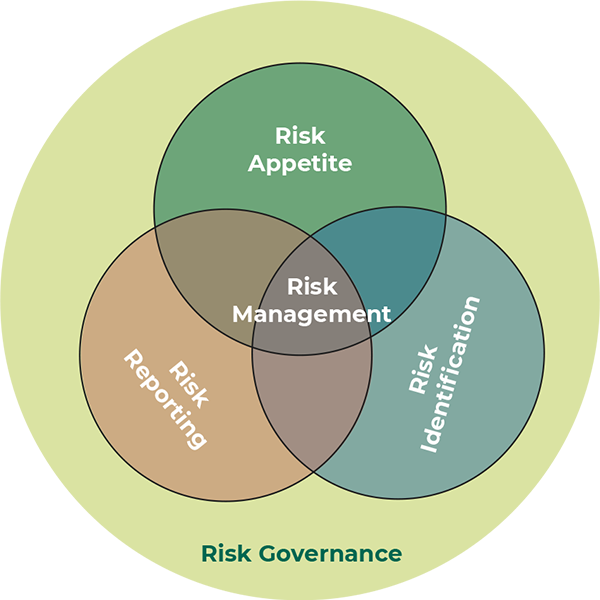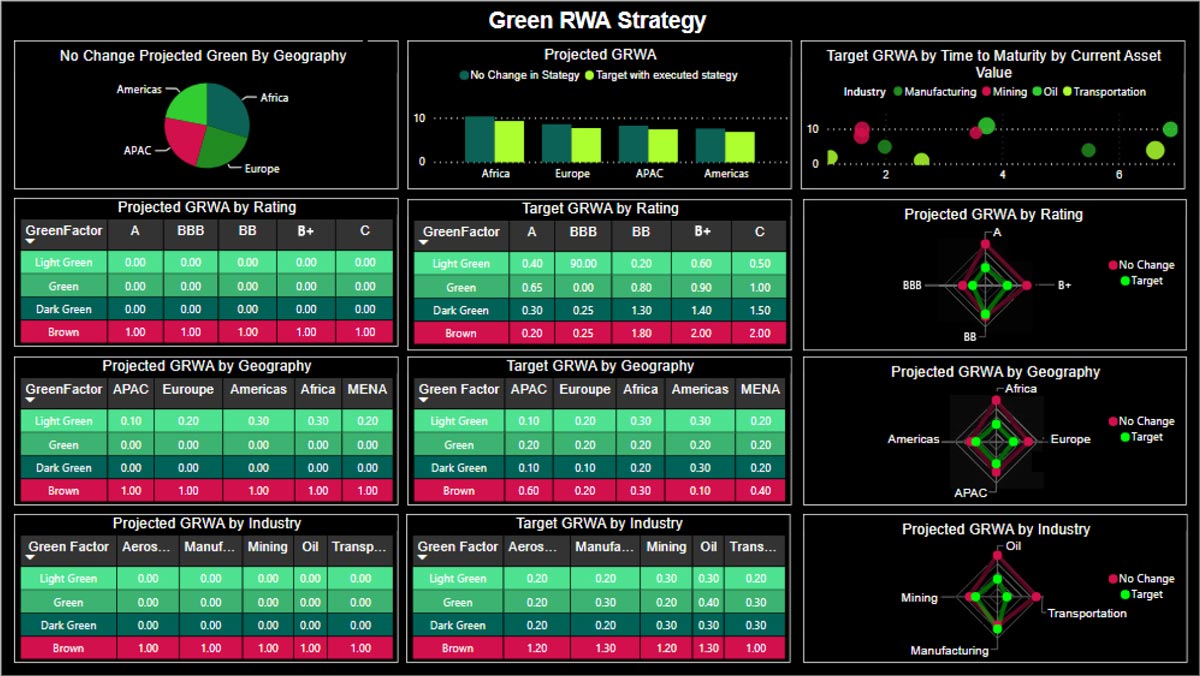Governments and regulators are ratcheting up scrutiny and expectations of climate risk. Banks can prepare by looking at early models.
Since the Paris COP of 2015, governments around the world have been looking at their economic infrastructure with a view to meeting their pledges and commitments made at that summit.
Planning for climate change inevitably starts with identification of greenhouse gas (GHG) emissions across the range of industrial sectors, and the creation of possible policies and plans that could prepare the ‘real’ economy for a low carbon future. Projections along various climate pathways are then priced in terms of required investments from both, public and private sources.
Lawmakers recognize that banking will not only have to act as the main conduit for green private finance but that banks will be faced with new risks to evaluate and manage as the transition towards sustainability occurs.
Guidance, from financial regulators across the world, as to how these new risks should be measured, managed, and reported is developing.
There are early movers in the regulatory space…
The UK’s Prudential Regulatory Authority (PRA) worked with the Financial Conduct Authority (FCA) to create the Climate Financial Risk Forum in 2019. The result was a set of guidelines from the PRA covering how climate-related risks should be integrated within existing risk management.
Banks can use this guidance summarized below, within and outside the UK as a best practice model. The following sections are explicitly noted (taken from PRA Supervisory Statement SS3/19).
Governance
The PRA expects a firm’s board to understand and assess financial risks from climate change that affect the firm, and be able to address and oversee these risks within the firm’s overall business strategy and risk appetite. The approach should demonstrate an understanding of distinctive elements of financial risks from climate change and a sufficiently long-term view of the financial risks that can arise beyond standard business planning horizons.
Risk Management
The PRA expects firms to address financial risks from climate change through their existing risk management frameworks, in line with their board-approved risk appetite, while recognizing that the nature of the risks requires a strategic approach. In a manner proportionate to their business, firms should identify, measure, monitor, manage, and report on their exposure to these risks. Firms should be able to evidence this in their written risk management policies, management information, and board risk reports. This includes where appropriate, updating existing risk management policies.
Risk Identification and Measurement
The PRA expects firms to understand the financial risks from climate change and how they will affect their business model. Firms should use scenario analysis and stress testing to inform the risk identification process and understand the short- and long-term financial risks to their business model, from climate change. Firms are also expected to go beyond using only historical data to inform their risk assessment, for example by considering future trends in catastrophe modeling. The PRA expects that such scenarios will develop and mature over time as firms learn from experience and each other.
Risk Monitoring
Where appropriate, the PRA expects firms to consider a range of quantitative and qualitative tools and metrics to monitor their exposure to financial risks from climate change. For example, these could be used to monitor exposures to climate-related risk factors, which could result from changes in the concentration of firms’ investment or lending portfolios, or the potential impact of physical risk factors on outsourcing arrangements and supply chains. The PRA expects that these metrics and tools will evolve and mature over time as firms gain experience.
Risk Management and Mitigation
Where the potential impacts of the financial risks from climate change are assessed to be material (for example, as a result of scenario analysis), the PRA expects firms to evidence how they will mitigate these financial risks, and to have a credible plan or policies in place for managing exposures. This could include actions the firm is taking to reduce concentrations of these risks. Plans should be reflective of the distinctive elements of the financial risks from climate change, so may differ from other risks.
Risk Reporting and Management Information
The PRA expects firms to provide the board and relevant sub-committees with management information on their exposure to the financial risks from climate change, for example, based on scenario analysis and the mitigating actions and associated timeframe the firm proposes to take. The management information should enable the board to discuss, challenge, and take decisions relating to the firm’s management of the financial risks from climate change.
Scenario Analysis
Where proportionate, the PRA expects firms to conduct scenario analysis to inform their strategic planning and determine the impact of the financial risks from climate change on their overall risk profile and business strategy. Scenario analysis should also be used to explore the resilience and vulnerabilities of a firm’s business model to a range of outcomes. The PRA expects approaches to scenario analysis to evolve and mature over time.
Disclosure
Banks and insurers have existing requirements to disclose information on material risks within their Pillar 3 disclosures (as required under Capital Requirements Regulation (575/2013) (CRR) and Solvency II), and on principal risks and uncertainties in their Strategic Report (as required under the UK Companies Act).
The strong underlying message is that, even though climate change exhibits highly specific characteristics, the financial impacts and risks to the banks need to be measured, monitored, and controlled within the standard risk framework currently in place.

Climate scenarios have unique parameters…
The PRA guidance notes that climate change analysis requires a subtly different approach, including appreciation of the specific risk types and the timeframes.
Risk Taxonomy
Financial climate risk can be split between:
- Transition – Risk associated with policies created by governments to meet pledges made to cut emissions. These policies become regulations and costs to impacted industries, which translate into increased credit risk to any bank financing them.
- Physical – Risk created by actual climate change, from rising sea levels, heatwaves, violent weather, or any other known effects from rising global temperatures. This impacts physical assets of banks’ customers, as well as those of their supply chains. Such disruption has the capability of deteriorating the business model of these firms, drastically changing their credit risk profile.
Scenario Definition
Typical risk scenarios span from one to five years and are designed to test short- and mid-term liquidity. Climate scenarios, by contrast:
- Have time horizons set by the short-, mid- and long-term goals. Long-term is defined as the 2100 global warming limits (relative to 1990 temperature levels). Mid-term refers to 2035 to 2050, and GHG emission levels that would be required by these dates to meet the 2100 targets. Short-term refers to 2030 or earlier, and the policy environments required to reach the mid-term levels.
- Are defined using multiple possible pathways to reach various final heating goals.
- Require banks to interpret data as it develops and becomes available, to create working scenarios that are refined through the coming decade.
Data is incomplete, but available…
Risk management needs data, and in the case of climate change, that data is sourced from a fast-developing scientific base. It is clear that the climate models are improving, with predictions from the 1990s proving accurate. However, the fact that they deal with potential futures means that they are still predictive models, and therefore, are quite different from the vast data sets of past market data normally used by banks for stress testing and scenario building.
Even so, data from various bodies does provide a solid starting point for how businesses will be affected under various climate pathways.
- The Intergovernmental Panel on Climate Change (IPCC) provides a large number of research pathways that would lead to specified, end of century, temperature levels. These are created by experts across multiple sciences and detail how the GHGs would reduce over time to reach these numbers.
- The Net Greening of the Financial System (NGFS) works through the IPCC scenarios and provides costs in terms of local and global GDP impacts. The NGFS is a collective of central bankers and economists and includes almost all of the world’s main economies.
- The International Energy Agency (IEA) tracks precisely which industries will be targeted by the pathways and how specified adaptations and transitions are moving along. This indicates whether the pathways are being followed in an orderly manner, implying a managed route, or, in a disorderly manner implying a higher likelihood of sudden, stringent measures being put in place.
Pathways and financial scenarios evolve over time. It is important for banks to have frameworks in place that can take in changing data sets reflecting this dynamic environment.
Bank strategy has to react to evolving pathways…
A key message in the guidance is the need for banks to manage their own climate strategies in the context of this emerging area of risk.
This implies:
- Short-term analysis of current financial risks faced by banks if no changes are made to their loan books and specific pathways are followed by world governments.
- A mid-term analysis of various scenarios, both orderly and disorderly, regarding the impact on
- the balance sheet and its credit profile/capital requirements.
- Longer-term green targets that the bank believes fit its climate strategy and wider risk appetite.
- Monitoring these targets and the capacity to report to stakeholders about their progress.
- Front line tools that are designed to recognize the changing credit risk profile, and reflect it in new credit facility pricing.
It has to be emphasized that this is a new risk category, and it does have unique properties, but it has to fit into a bank’s core view of risk management and governance.
GreenCap can help…
GreenCap is a ready-to-use risk system, designed to specifically answer these questions:
- What is the bank’s financial exposure to transitional and physical climate change along various pathways?
- What would be the change in that impact scenario, given a bank’s green strategy for its balance sheet?
- Is the bank moving towards, or away from its target sustainability levels?

GreenCap was designed to work with existing bank measures and to augment the risk appetite, and fit in with current risk governance practices.

